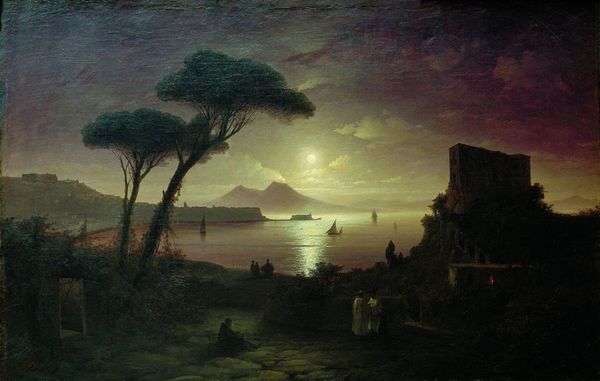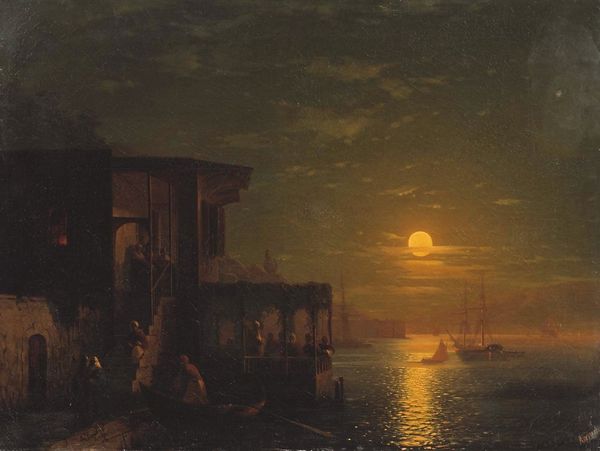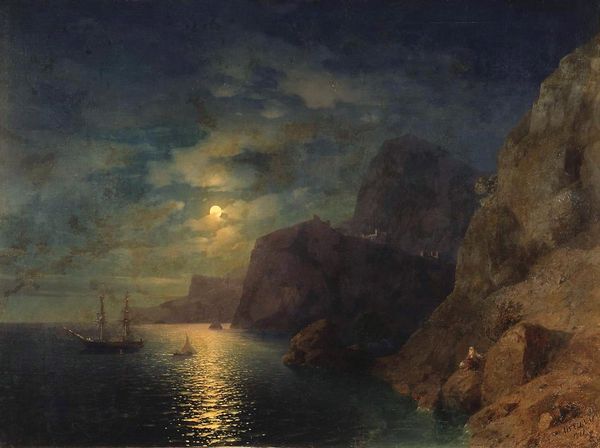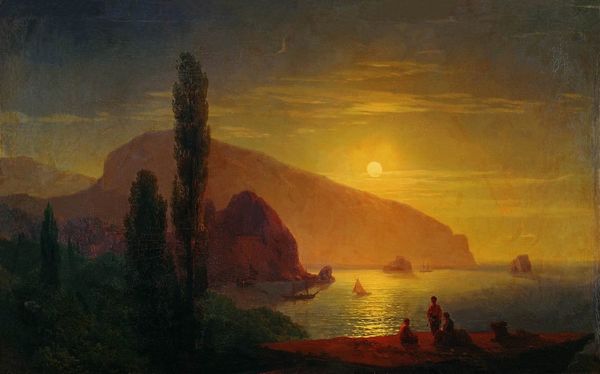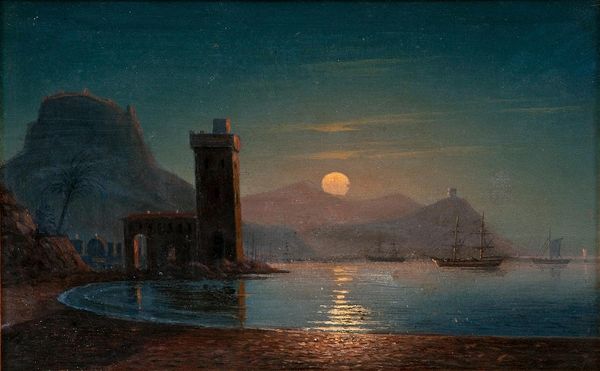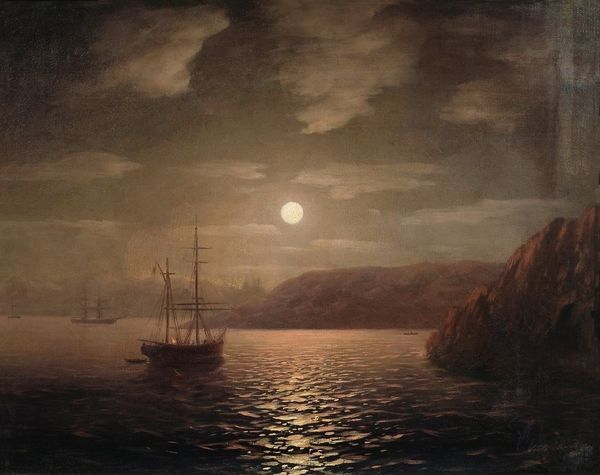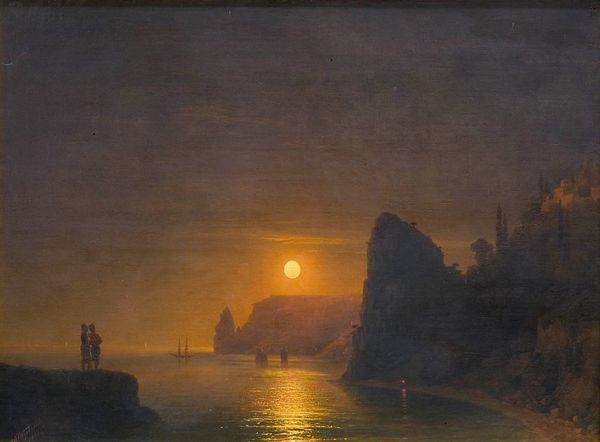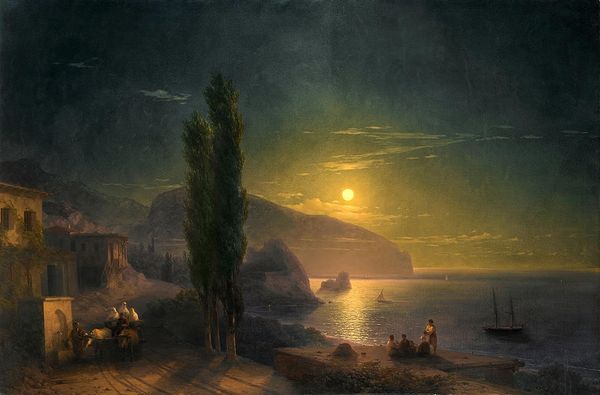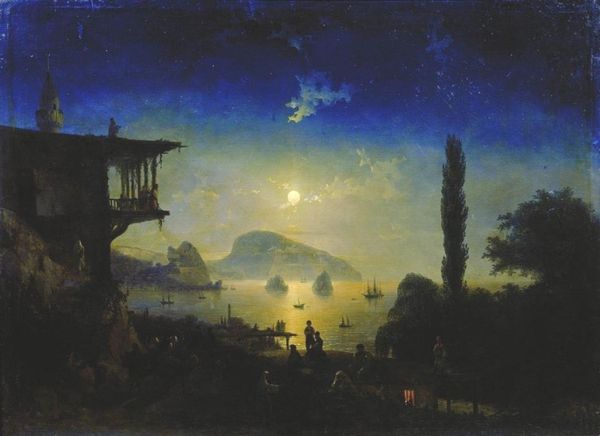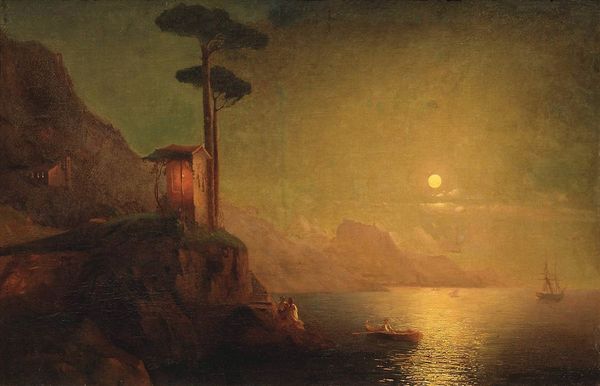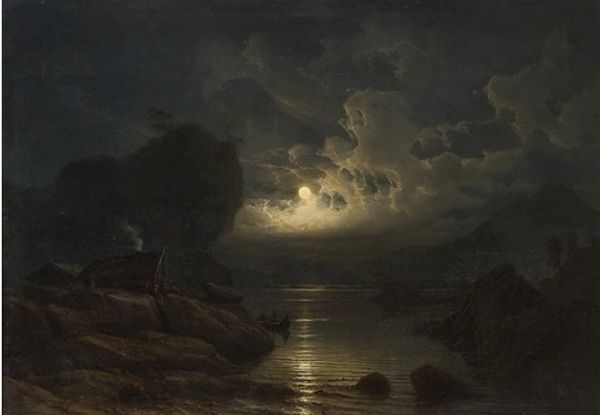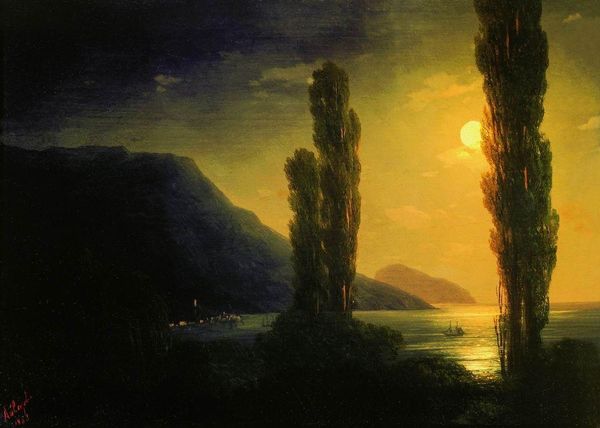
Copyright: Public domain
Art Historian: We’re looking at “Lunar night in the Crimea,” a romantic vision rendered in 1862 by Ivan Konstantinovich Aivazovsky using oil on canvas. Artist: Oh, that moon. It’s a perfect pearl, suspended in this dreamy, hazy sky. There’s something both peaceful and slightly haunting about this seascape. The stillness feels… pregnant with possibility. Art Historian: Aivazovsky, as a leading figure of Russian Romanticism, was immensely popular for his dramatic seascapes. His ability to capture the nuances of light and water made him a celebrated, if sometimes controversial, figure. Critics occasionally dismissed his work as overly theatrical, appealing to popular tastes rather than adhering to academic rigor. Artist: Theatrical, maybe, but there's an undeniable skill in rendering light. Look at the way the moonlight shimmers on the water. And the silhouette of that ship… It feels like it’s sailing straight into a dream. Art Historian: Precisely. Aivazovsky wasn’t merely painting a scene; he was crafting a feeling, an experience. His works often tapped into Russia's imperial ambitions, romanticizing maritime power and trade routes, particularly in regions like Crimea, which had significant strategic and symbolic value. Artist: I can feel it. It's that Romantic pull isn't it, the awe of nature mixed with a sense of human smallness? But what intrigues me is that little building on the right—a hint of civilization, nestled almost hidden along the coast. Art Historian: A reminder of human presence amidst the vastness, anchoring the viewer. The painting subtly reinforces the idea of Russian dominion over these lands, presenting a serene, almost idyllic vision. Even in the night. Artist: The politics of moonlight, huh? I never thought of it that way, but it makes sense. Still, I can’t shake the raw beauty of it all. The almost photographic realism mixed with this deeply felt emotion. Art Historian: Aivazovsky successfully merged technical skill with emotional resonance, making him a compelling figure, no matter one’s perspective. Artist: Exactly. Even knowing the historical context doesn't diminish that immediate emotional pull for me. Makes me wanna grab a rowboat and just… drift. Art Historian: A testament to Aivazovsky’s enduring appeal, capturing both the political climate and the timeless allure of the sea.
Comments
No comments
Be the first to comment and join the conversation on the ultimate creative platform.
